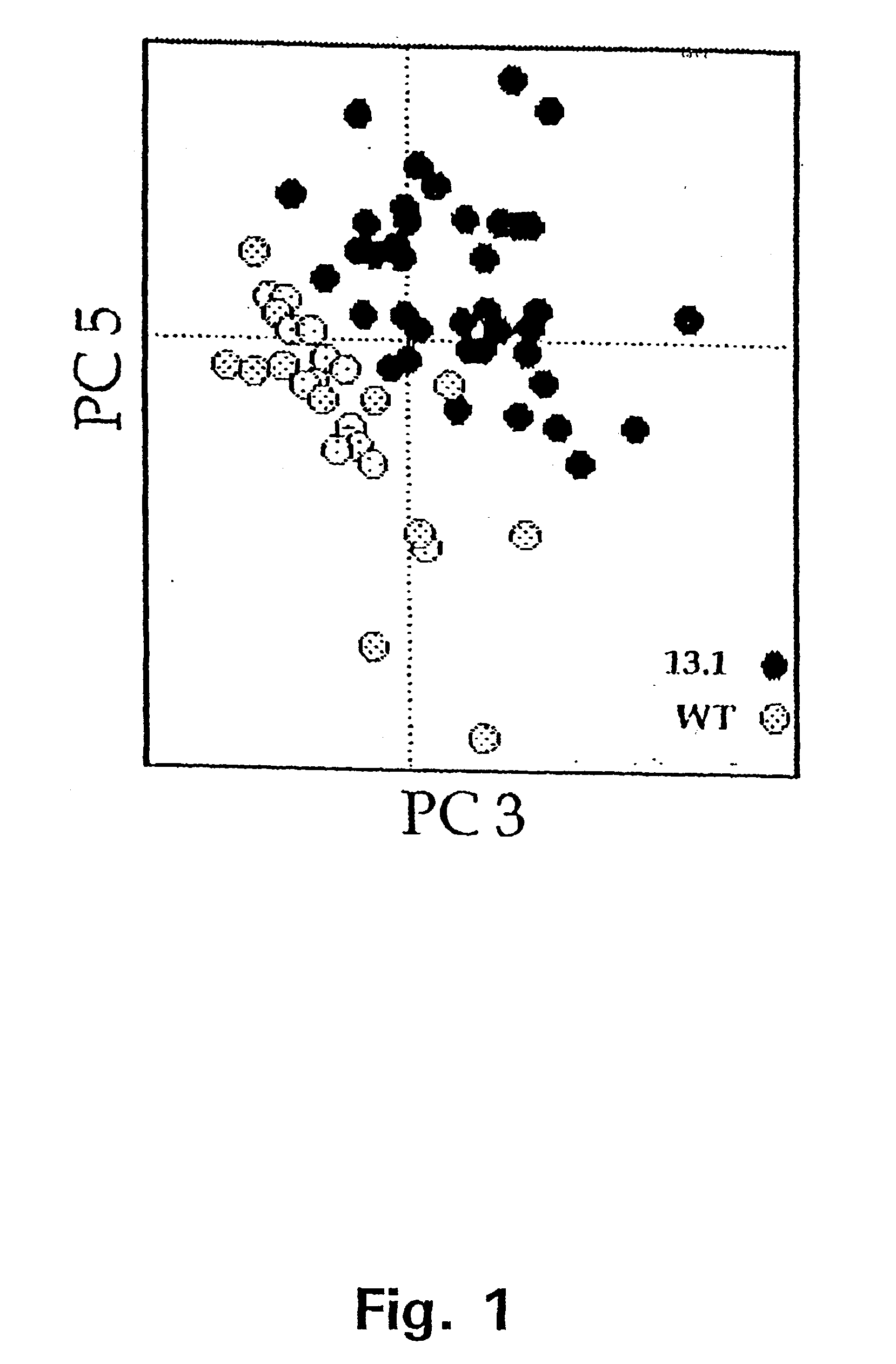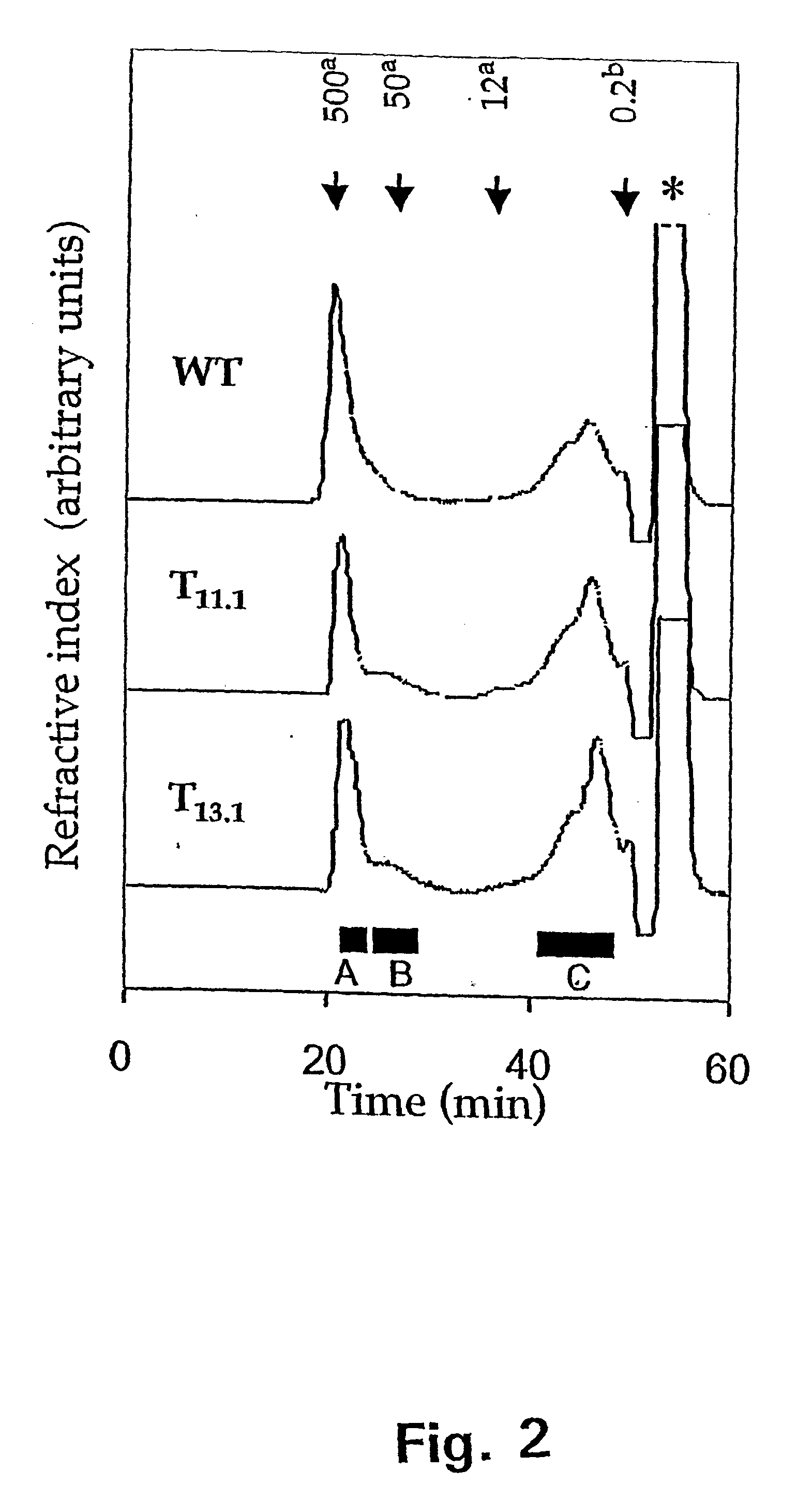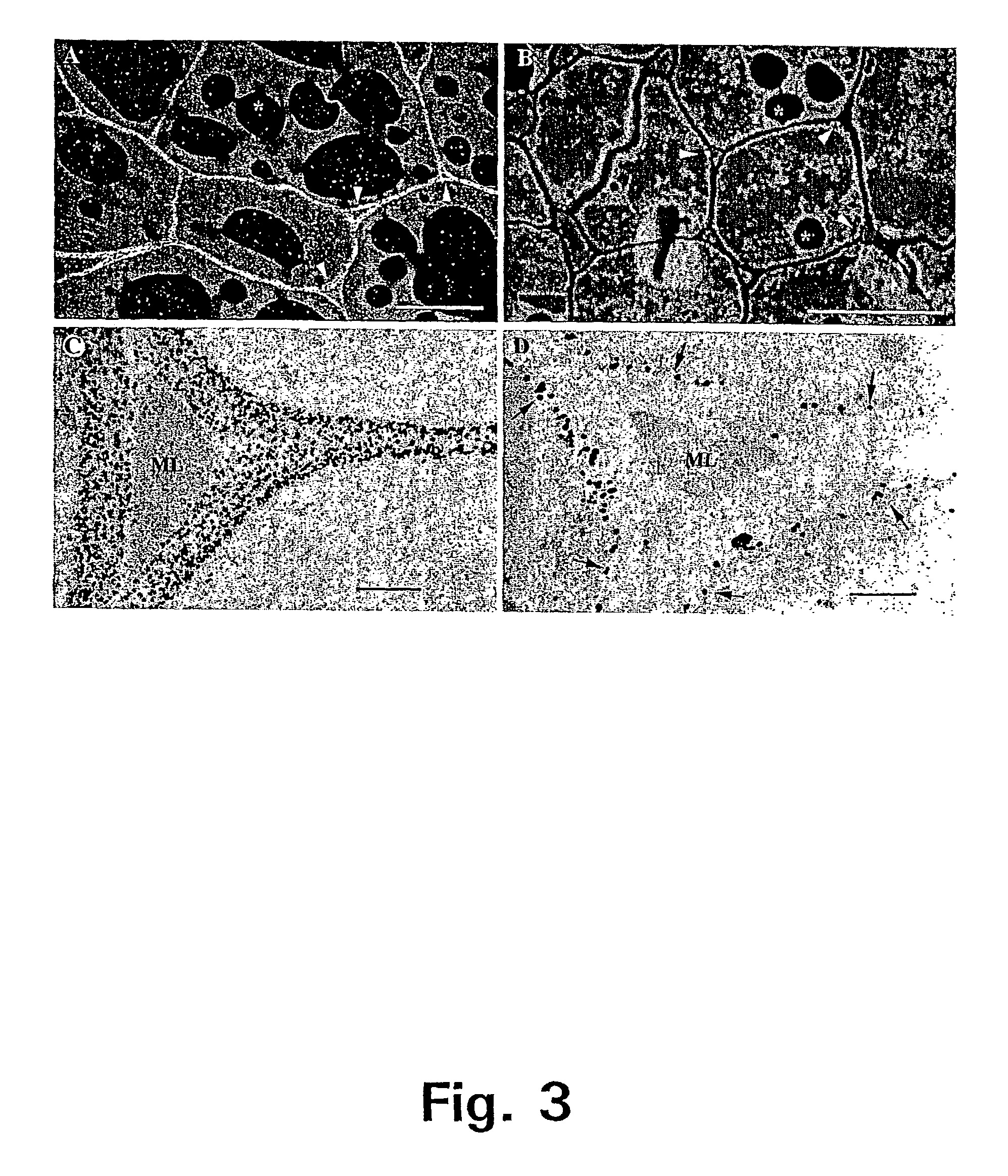Method for remodelling cell wall polysaccharide structures in plants
a cell wall polysaccharide and plant technology, applied in the field of plant cell wall polysaccharide structure remodelling, can solve the problems of insufficient synthesis of saline phosphate,
- Summary
- Abstract
- Description
- Claims
- Application Information
AI Technical Summary
Benefits of technology
Problems solved by technology
Method used
Image
Examples
example 1
[0201] A General Set of DNA Constructs for Plant Transformation
[0202] DNA Construct pPGB121s-new
[0203] The granule bound starch synthase promoter region from the vector pPGB121s (a kind gift from R. Visser) was amplified by the polymerase chain reaction (PCR) with primers 5'GATTACGCCAAGCTTTAACG3' (SEQ ID NO:1) and 5'GGTTTGTCGACGAAATCAGAAATAATTGGAGG3' (SEQ ID NO:2) introducing a HindIII site 5' and a Sa / I site in the 3' end of the PCR product. In addition, the PCR approach deleted a spurious translational start codon in the GBSS 5' untranslated region. The product was then purified by agarose-gel electrophoresis and ligated into HindIII / Sa / I-cleaved pGUSNos (a gift from L. Sander) producing pGBSS-GUSNos. The GBSS promoter fragment was then excised from pGBSS-GUSNos with HindIII and XbaI, purified, and subsequently cloned in HindIII / XbaI digested pBl121 (Datla et al., 1992), generating the vector pPGB121-new. This vector was digested with SmaI and SacI in order to remove the GUS codin...
example 2
[0212] Specific DNA Constructs for Plant Transformation Harbouring a Polysaccharide-modifying Enzyme Targeted for the Apoplast
[0213] DNA Construct pGED-GAL
[0214] The 1,3 kb cDNA encoding an Aspergillus aculeatus galactanase was excised from the vector pC1G1 (a generous gift from S. Kauppinen) by digestion with HindIII and XbaI, purified and cloned in the corresponding sites in the pGED MCS, creating the expression cassette: GBSS promoter, endo-galactanase, nopaline synthase terminator. This DNA construct is referred to as pGED-GAL.
[0215] Construction of pGED-ARA
[0216] A 1,2 kb cDNA encoding an Aspergillus aculeatus arabinanase was excised from the vector pC1A4 (a generous gift from S. Kauppinen) by digestion with HindIII and XbaI, purified and cloned in the corresponding sites in the pGED MCS giving rise to the plasmid pGED-ARA.
[0217] DNA Construct pADAP-ARA
[0218] The 1.2 kb fragment encoding the Aspergillus aculeatus arabinanase was isolated from pGED-ARA by digestion with HindIII / ...
example 3
[0227] Designing Constructs for Targeting the Gene Product to Intracellular Compartments.
[0228] DNA Construct pADAP / ARA-KDEL
[0229] The arabinanase encoding cDNA was amplified with the primers ACAGCTCAACAAGTGGTAAC (GBSSpro primer, SEQ ID NO:11) and GACTTCTCGAGTGGCTGG-CCTGTTGTGAAGGATGAACTTTAGTCTAGAAATGCTC (ARA-KDEL primer2, nucleotides encoding the KDEL ER retention signal is indicated with italics and an engineered stop codon is indicated in bold, SEQ ID NO:12) using the vector pGED / ARA as template. The resulting product was then cloned in the vector pCR2.1-TOPO as described by the manufacturer (Invitrogen). This step resulted a mixture of the vectors pCR2.1-TOPO / ARA-KDEL1 and 2 with the ARA-KDEL product in different orientations.
[0230] In order to minimise the possibility for later expression problems due to errors introduced during PCR, the majority of the ARA-KDEL coding region was swapped with the coding region originating from the original ARA cDNA included in the yeast expressi...
PUM
| Property | Measurement | Unit |
|---|---|---|
| Fraction | aaaaa | aaaaa |
| Fraction | aaaaa | aaaaa |
| Fraction | aaaaa | aaaaa |
Abstract
Description
Claims
Application Information
 Login to View More
Login to View More - R&D
- Intellectual Property
- Life Sciences
- Materials
- Tech Scout
- Unparalleled Data Quality
- Higher Quality Content
- 60% Fewer Hallucinations
Browse by: Latest US Patents, China's latest patents, Technical Efficacy Thesaurus, Application Domain, Technology Topic, Popular Technical Reports.
© 2025 PatSnap. All rights reserved.Legal|Privacy policy|Modern Slavery Act Transparency Statement|Sitemap|About US| Contact US: help@patsnap.com



